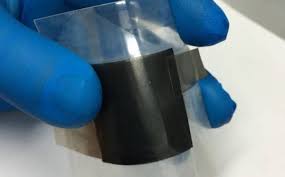
Breaking News
 Elon Tells Rogan the Real Reason Democrats are Prolonging the Government Shutdown [WATCH]
Elon Tells Rogan the Real Reason Democrats are Prolonging the Government Shutdown [WATCH]
 Newsom: Trump Is Trying to Rig the Election -- He Knows GOP Will Lose
Newsom: Trump Is Trying to Rig the Election -- He Knows GOP Will Lose
 There is zero justification for the Department of Justice's silence while the most serious...
There is zero justification for the Department of Justice's silence while the most serious...
 Gabbard Says Trump Has Ended America's Era Of 'Regime Change'
Gabbard Says Trump Has Ended America's Era Of 'Regime Change'
Top Tech News
 The 6 Best LLM Tools To Run Models Locally
The 6 Best LLM Tools To Run Models Locally
 Testing My First Sodium-Ion Solar Battery
Testing My First Sodium-Ion Solar Battery
 A man once paralyzed from the waist down now stands on his own, not with machines or wires,...
A man once paralyzed from the waist down now stands on his own, not with machines or wires,...
 Review: Thumb-sized thermal camera turns your phone into a smart tool
Review: Thumb-sized thermal camera turns your phone into a smart tool
 Army To Bring Nuclear Microreactors To Its Bases By 2028
Army To Bring Nuclear Microreactors To Its Bases By 2028
 Nissan Says It's On Track For Solid-State Batteries That Double EV Range By 2028
Nissan Says It's On Track For Solid-State Batteries That Double EV Range By 2028
 Carbon based computers that run on iron
Carbon based computers that run on iron
 Russia flies strategic cruise missile propelled by a nuclear engine
Russia flies strategic cruise missile propelled by a nuclear engine
 100% Free AC & Heat from SOLAR! Airspool Mini Split AC from Santan Solar | Unboxing & Install
100% Free AC & Heat from SOLAR! Airspool Mini Split AC from Santan Solar | Unboxing & Install
 Engineers Discovered the Spectacular Secret to Making 17x Stronger Cement
Engineers Discovered the Spectacular Secret to Making 17x Stronger Cement
Researchers achieve a 10x supercapacitor energy density breakthrough

They could completely erase the Achilles heel of electric vehicles – their slow charging times – if they could hold more energy. And now Chinese and British scientists say they've figured out a way to store 10 times more energy per volume than previous supercapacitors.
A team split between University College London and the Chinese Academy of Sciences has released a study and proof of concept of a new supercapacitor design using graphene laminate films and concentrating on the spacing between the layers, the researchers discovering that they could radically boost energy density when they tailored the sizes of pores in the membranes precisely to the size of electrolyte ions.
Using this design, the team says it's achieved a massive increase in volumetric energy density. Where "similar fast-charging commercial technology" tends to offer around 5-8 watt-hours per liter, this new design has been tested at a record 88.1 Wh/l. The team claims it's "the highest ever reported energy density for carbon-based supercapacitors."
That figure is toward the high end of what a typical lead-acid battery stores, but while lead-acid batteries charge very slowly and offer fairly low power density, the supercapacitors can charge very, very quickly and offer massive power densities around 10 kilowatts per liter.



